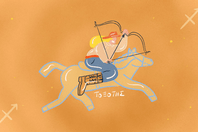Short story:-Πολλά από τα λοιμώδη και παρασιτικά νοσήματα των ζώων είναι δυνατόν να μεταδοθούν από τα ζώα στον άνθρωπο. Αυτά ανήκουν στην κατηγορία των ζωονόσων ή ζωοανθρωπονόσων.-Oι ζωονόσοι ή ζωοανθρωπονόσοι είναι κοινότατες/πολλές κι έχουν επηρεάσει τις ανθρώπινες κοινωνίες, σε όλα τα μήκη και τα πλάτη του κόσμου, από την απαρχή τους.- Π.χ. η βρουκέλλωση, η πανώλη και ο έμπολα είναι τέτοιοι νόσοι (βλ. https://www.who.int/zoonoses/diseases/en/) ενώ άλλες γίνονται μεταδοτικές από άνθρωπο σε άνθρωπο και άλλοι όχι (ή είναι εξαιρετικά χαμηλό το ποσοστό της μετάδοσης). Το HIV, επίσης, εικάζεται πως ξεκίνησε ως ζωονόσος σε άλλα πρωτεύοντα και μεταλλάχτηκε σε αμιγώς (;) ανθρωπονόσο. -Εννοείται πως δεν «ευθύνονται», μόνο, συγκεκριμένοι πληθυσμοί (όπως οι Κινέζοι) για τα όποια κακώς κείμενα.-(Επειδή αναφέρθηκε) To σοβαρό οξύ αναπνευστικό σύνδρομο (SARS) εμφανίστηκε στην Νότια Κίνα, «υπετίοι» δε, θεωρούνται ειδικός τύπος νυχτερίδων (ως αρχική πηγή) με ξενιστή τις μοσχογαλές, τις οποίες και οι άνθρωποι, εκεί, τρώνε.-Οι μοντέρνες συνθήκες διαβίωσης (που έχουν, βεβαία, τεράστια διαφορά από σημεία σε σημεία του πλανήτη) προσφέρουν κάποια θετικά, όταν έχουμε να κάνουμε για ζωονόσους (παλιές και καινούργιες) π.χ. έγκυρη και γρήγορη διάγνωση/ αποτελεσματική περίθαλψη/ καλύτερες συνθήκες υγιεινής και συντονισμός δράσεων/καραντίνες κ.λπ., αλλά και αρνητικά (για περισσότερα βλ.παρακάτω Zoonotic disease issues faced by China).Longer story:SARS coronavirus (SARS-CoV) – virus identified in 2003. SARS-CoV is thought to be an animal virus from an as-yet-uncertain animal reservoir, perhaps bats, that spread to other animals (civet cats) and first infected humans in the Guangdong province of southern China in 2002.https://www.who.int/ith/diseases/sars/en/αλλά και "In late 2017, Chinese scientists traced the virus through the intermediary of civets to cave-dwelling horseshoe bats in Yunnan province"._________Αναφορικά με την γρίπη των πτηνών:There are many subtypes of avian influenza viruses, but only some strains of five subtypes have been known to infect humans: H5N1, H7N3, H7N7, H7N9, and H9N2. Κάποιοι τύποι "προέρχονται" από Χονκ Κονγκ/Κίνα+Scientists Identify Origin And History Of H7N9 Bird Flu Virushttps://www.medicalnewstoday.com/articles/260025#1_________Zoonosisβλ. history"Many modern diseases, even epidemic diseases, started out as zoonotic diseases. It is hard to establish with certainty which diseases jumped from other animals to humans, but there is increasing evidence from DNA and RNA sequencing, that measles, smallpox, influenza, HIV, and diphtheria came to humans this way. Various forms of the common cold and tuberculosis also are adaptations of strains originating in other species.Zoonoses are of interest because they are often previously unrecognized diseases or have increased virulence in populations lacking immunity. The West Nile virus appeared in the United States in 1999 in the New York City area, and moved through the country in the summer of 2002, causing much distress. Bubonic plague is a zoonotic disease, as are salmonellosis, Rocky Mountain spotted fever, and Lyme disease.A major factor contributing to the appearance of new zoonotic pathogens in human populations is increased contact between humans and wildlife"https://en.wikipedia.org/wiki/Zoonosis_________Τα παγκόσμια hotspots των ζωονόσων (χάρτες)https://www.onmed.gr/ygeia-eidhseis/story/344451/ta-pagkosmia-hotspots-ton-zoonoson-xartes_________(Λύσσα, Έμπολα, Δάγκειος πυρετός, HIV-1)Five different stages of zoonotic virus adaptation. (γραφικό: χονδροκομμένα).https://www.researchgate.net/figure/Five-different-stages-of-zoonotic-virus-adaptation-Description-by-Wolfe-et-al_fig5_278826654_________Zoonosis HistoryZoonoses, diseases that are transmitted from animals to humans, stem from bacterial, viral, parasitic, or fungal infection of an animal host that spreads to humans through bite, scratch, or ingestion. Zoonotic diseases have had a major impact on human civilization throughout history and have shaped modern societies, governments, and farming practices.(Plague/Bovine Tuberculosis)https://www.news-medical.net/health/Zoonosis-History.aspx_________Zoonotic disease issues faced by China(Resurgence of ancient zoonoses)In the past 20 years, zoonotic diseases have produced ableak situation in China. Ancient zoonoses continue tooccur, new zoonoses are appearing and the risk of newdiseases from abroad is increasing. Zoonoses pose aserious threat to human health, animal survival, the development of the livestock industry, food safety and biosecurity. Meanwhile, global warming, globalization, changes in farming methods, accelerating urbanization, the destruction of the environment, close contact between humans and animals, and the abuse of biotechnology are increasing the risk of zoonoses.Brucellosis and plague are epidemic and increasingly prevalent in certain areas of China, and hemorrhagic fever, dengue fever, leishmaniasis and hydatid disease have caused signifcant morbidity and mortality in Xinjiang. Schistosomiasis and tuberculosis are epidemic and potentially very dangerous. Rabies was first described about 2400 years ago, and there are 35000–50000 deaths every year worldwide. One Asian dies of rabies every 15 min, and 50% of the victims are children under 15 years of age who experience a mortality rate of up to 100%. In China, there is an annual incidence of approximately 3000 fatal cases_________Zoonotic diseases are very common, both in the United States and around the world. Scientists estimate that more than 6 out of every 10 known infectious diseases in people can be spread from animals, and 3 out of every 4 new or emerging infectious diseases in people come from animals.https://www.cdc.gov/onehealth/basics/zoonotic-diseases.html
























